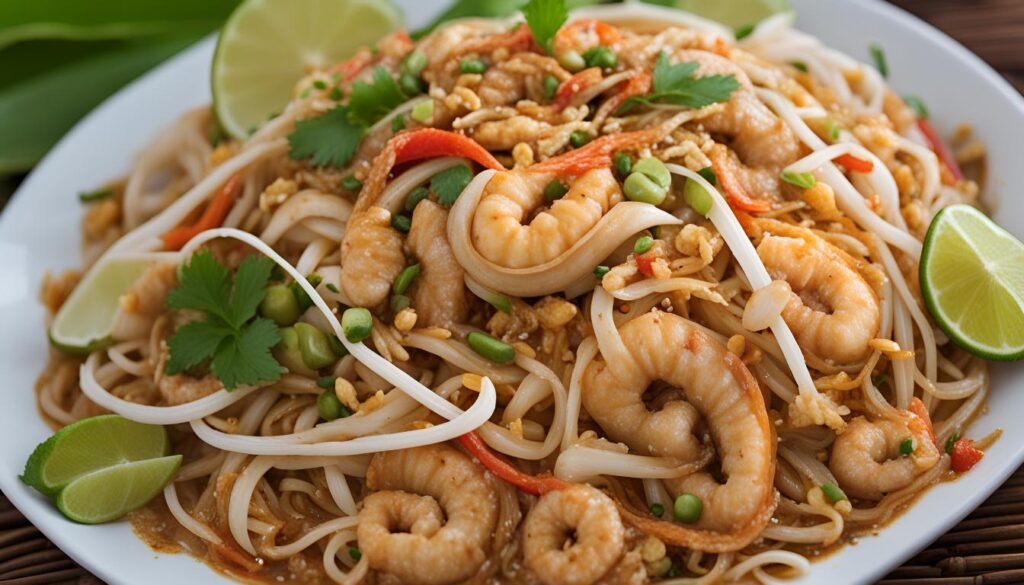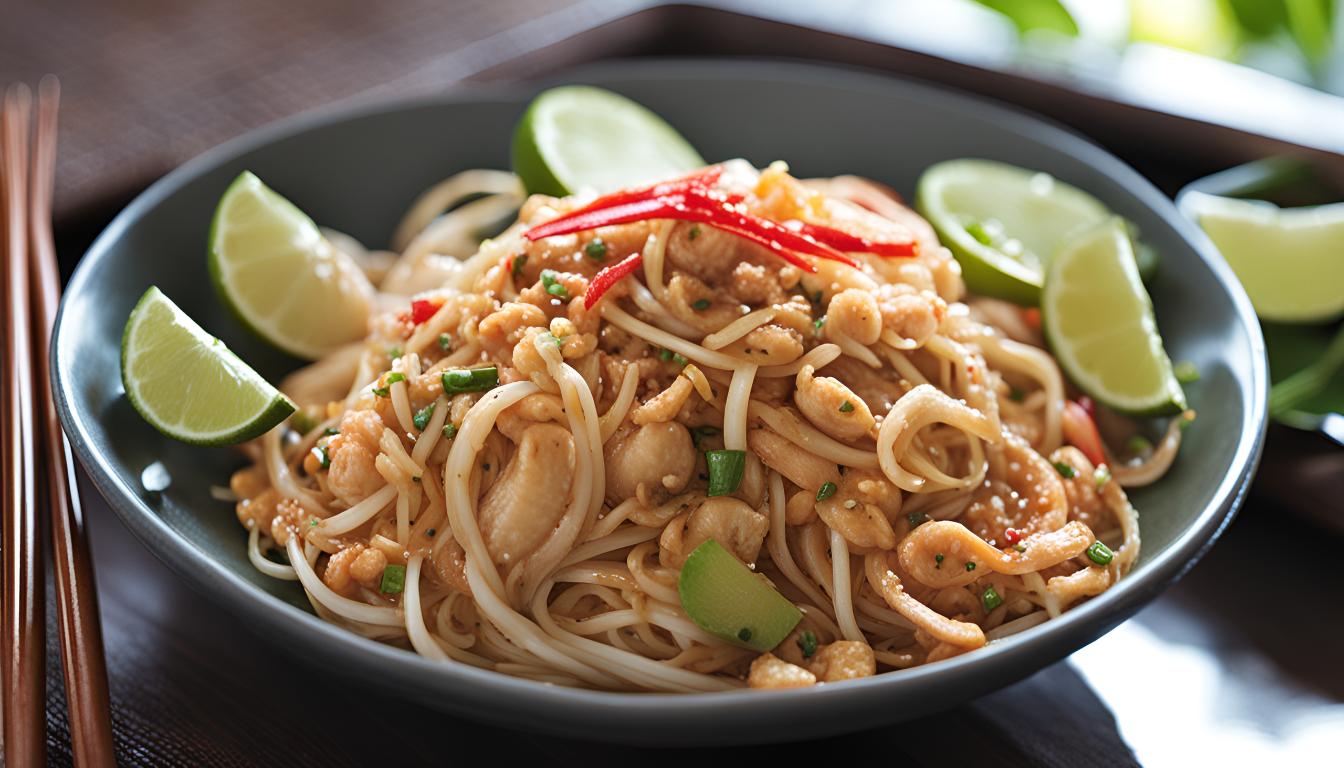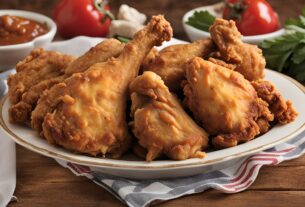Unveiling the Essence of Pad Thai: A Journey through Thai Cuisine
Pad Thai stands as a cherished icon of Thai cuisine, renowned for its harmonious blend of sweet, sour, salty, and spicy flavors. Originating from Thailand, this dish has captivated palates worldwide with its vibrant colors, fresh ingredients, and irresistible aroma. In this extensive exploration, we will uncover the history, ingredients, preparation methods, cultural context, and practical tips for mastering Pad Thai in your own kitchen.
Historical Origins and Evolution
Pad Thai’s origins can be traced back to the early 20th century in Thailand during a period of cultural and culinary transformation. While its exact inception is debated, Pad Thai is believed to have been influenced by Chinese noodle dishes brought to Thailand by Chinese immigrants. Over time, Thai chefs adapted these culinary influences, incorporating local ingredients and flavors to create what is now recognized as Pad Thai.
During World War II, the Thai government promoted Pad Thai as a national dish to foster unity and promote Thailand’s rice noodles and peanuts, which were abundantly available. This initiative successfully elevated Pad Thai to prominence, both domestically and internationally, establishing it as a symbol of Thai culinary identity.
Essential Ingredients for Pad Thai
Pad Thai boasts a diverse array of ingredients that contribute to its complex yet balanced flavors. Here are the essential components for preparing authentic Pad Thai:
Noodles:
– Rice Noodles: Flat, wide rice noodles (sen lek or sen chan) are traditionally used in Pad Thai. They are soaked in water until pliable before cooking.
Protein:
– Shrimp, Chicken, or Tofu: Protein of choice, either shrimp, chicken, or tofu, cut into bite-sized pieces and stir-fried for texture and flavor.
Vegetables:
– Bean Sprouts: Fresh bean sprouts provide crunch and freshness to Pad Thai.
– Chinese Chives (or Green Onions): Sliced chives or green onions add a mild onion flavor and vibrant color.
– Garlic: Minced garlic enhances the aromatic base of the dish.
Sauce:
– Tamarind Paste: Tamarind paste provides the signature tangy flavor to Pad Thai. It is mixed with water and other sauces to form the base of the dish.
– Fish Sauce: Adds saltiness and umami depth to the sauce.
– Palm Sugar (or Brown Sugar): Sweetens the sauce, balancing the tanginess of tamarind and saltiness of fish sauce.
– Dried Shrimp (Optional): Ground dried shrimp adds a subtle seafood flavor to the sauce.
Garnishes:
– Roasted Peanuts: Crushed or finely chopped peanuts add texture and nuttiness.
– Lime Wedges: Squeezing fresh lime juice over Pad Thai just before serving enhances the dish’s flavors.
– Chili Flakes (Optional): For those who prefer a spicier kick, chili flakes can be added to taste.
Cooking Techniques for Pad Thai
Preparing Pad Thai involves a series of cooking techniques to ensure noodles are perfectly cooked and ingredients are well incorporated. Here’s a step-by-step guide to mastering Pad Thai:

Step 1: Prepare Ingredients
1. Soak Rice Noodles: Place rice noodles in a large bowl of warm water and soak until they are pliable but still firm to the touch. Drain and set aside.
2. Prepare Protein: If using shrimp or chicken, marinate with a little soy sauce and stir-fry in a hot wok or skillet until cooked through. For tofu, pan-fry until golden brown. Set aside.
3. Prepare Sauce: In a small bowl, mix tamarind paste with warm water until dissolved. Add fish sauce, palm sugar (or brown sugar), and ground dried shrimp (if using). Adjust the sweetness, saltiness, and tanginess to taste.
Step 2: Stir-Fry Pad Thai
1. Heat the Wok: Heat a wok or large skillet over medium-high heat. Add oil and swirl to coat the pan.
2. Cook Garlic: Add minced garlic to the hot oil and stir-fry for a few seconds until fragrant.
3. Add Noodles: Add soaked and drained rice noodles to the wok. Stir-fry quickly to coat the noodles with oil and garlic.
4. Add Sauce: Pour the prepared Pad Thai sauce over the noodles. Use tongs or chopsticks to toss the noodles gently, ensuring they are evenly coated with the sauce.
5. Add Protein and Vegetables: Add cooked shrimp, chicken, or tofu to the wok, along with bean sprouts and sliced Chinese chives (or green onions). Toss everything together until heated through.
6. Taste and Adjust: Taste the Pad Thai and adjust seasoning if needed. Add more fish sauce for saltiness, more palm sugar for sweetness, or more tamarind paste for tanginess.
Step 3: Serve Pad Thai
1. Plate and Garnish: Transfer Pad Thai to serving plates or a large platter. Sprinkle crushed peanuts over the top and garnish with lime wedges and chili flakes (if desired).
2. Serve Hot: Serve Pad Thai immediately while hot, allowing diners to squeeze fresh lime juice over their portion to taste.
Cultural Significance of Pad Thai
Pad Thai holds cultural significance as a representation of Thailand’s culinary heritage and its vibrant street food culture. In Thailand, Pad Thai is enjoyed as a quick and flavorful meal, often cooked fresh to order by street vendors using portable woks over open flames. It embodies the Thai philosophy of balancing flavors—sweet, sour, salty, and spicy—in harmony, creating a dish that is both satisfying and addictive.
Beyond Thailand, Pad Thai has gained global acclaim, becoming synonymous with Thai cuisine in restaurants and home kitchens worldwide. Its versatility and adaptability have allowed it to evolve with local ingredients and preferences while retaining its essential flavors and techniques.
Tips for Perfecting Pad Thai at Home
To achieve restaurant-quality Pad Thai at home, consider the following tips:
– Prepare Ingredients in Advance: Have all ingredients prepped and ready to go before starting to stir-fry. This ensures a smooth and efficient cooking process.
– Use High Heat: Stir-fry Pad Thai over high heat to achieve a smoky wok flavor and prevent noodles from becoming soggy.
– Customize Ingredients: Feel free to customize Pad Thai with your favorite proteins (shrimp, chicken, tofu), vegetables (bell peppers, carrots), and garnishes (cilantro, Thai basil) for added flavor and texture.
– Balance Flavors: Taste and adjust the Pad Thai sauce according to your preference for sweetness, saltiness, and tanginess. Experiment with different ratios of tamarind, fish sauce, and palm sugar until you find the perfect balance.
– Serve Immediately: Pad Thai is best enjoyed hot off the wok. Serve immediately after cooking to preserve the noodles’ texture and flavors.
Conclusion
Pad Thai stands as a testament to Thailand’s culinary artistry, blending traditional flavors with contemporary influences to create a dish that transcends borders and captivates palates worldwide. Its journey from humble origins to global popularity reflects Thailand’s rich cultural heritage and its ability to innovate while preserving authentic flavors and techniques.
By exploring the intricacies of Pad Thai—from its historical roots to its essential ingredients and cooking techniques—you embark on a culinary adventure that celebrates Thailand’s vibrant street food culture and its dedication to flavor balance. Whether preparing it for a casual weeknight dinner or a festive gathering, Pad Thai invites you to savor the sweet, sour, salty, and spicy flavors that define Thai cuisine.
Through this comprehensive guide, you are equipped with the knowledge and skills to recreate Pad Thai with authenticity and flair, ensuring a memorable dining experience that honors tradition while embracing your own creative expression. Embrace the art of Thai cooking, and indulge in the pleasure of sharing delicious food and cultural heritage with those around you.
In conclusion




